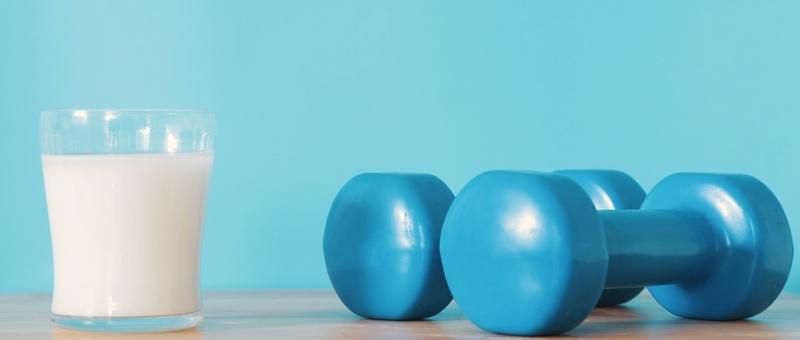
Beat the chill: why movement matters for your joints in cold weather
Peer reviewed by Dr Colin Tidy, MRCGPAuthored by Victoria RawOriginally published 24 Nov 2025
Meets Patient’s editorial guidelines
- DownloadDownload
- Share
- Language
- Discussion
With Christmas fast approaching and temperatures continuing to fall, people with joint issues should take extra care. Cold weather can worsen pain and stiffness, making the winter months especially challenging. We spoke to an expert to find out why this happens - and how you can protect your joints and stay healthy when Jack Frost comes calling.
In this article:
Winter brings fairy lights, festivities, and plenty of fun - but it also brings colder temperatures. While the chill may add to the magic of the season, it can be far less welcome for people living with arthritis or joint pain.
Dr Nurul Ahad, Consultant Orthopaedic Surgeon and Medical Director of Practice Plus Group, UK says that although it may be tempting to stay indoors, keeping active in cold weather is essential for maintaining healthy joints.
“The danger during these cold snaps is that we are tempted to do less exercise and wrap up warm on the sofa,” explains Ahad. “But it can be really detrimental to hip and knee joints if you stop exercising regularly.”
Dr Nurul Ahad, Consultant Orthopaedic Surgeon and Medical Director, Practice Plus Group, UK

Continue reading below
How winter weather affects your joints
As the UK Health Security Agency continues to issue cold-weather alerts throughout the winter, people with arthritis may notice their joints becoming even stiffer and more painful as temperatures plummet.
Ahad warns that when it’s cold, the oil that keeps your joints moving smoothly (synovial fluid) becomes affected. This can make your joints feel stiffer and achier than usual.
“In colder weather, the synovial fluid in your joints - which helps with shock absorption and lubrication - becomes thicker and less effective, making them stiffer,” he says. “If you already live with joint pain, cold weather can make it worse.
“Low atmospheric pressure can also cause tissue expansion around your joints, leading to swelling and discomfort, while nerves become more sensitive to pain.”
The power of staying active
Ahad says that if you’re worried about how the winter chill might affect your joints, the best thing you can do is keep moving. Staying active helps counter many of the negative effects cold weather can have on joint health.
He explains: “Physical activity helps bone health and boosts the heart and lungs. It’s also an excellent way to maintain a healthy weight, which is essential for keeping the pressure off your joints.”
Tips for keeping your joints healthy in cold weather
If you’re looking for simple ways to protect your joints this winter, the good news is there are plenty of easy habits that can help. With a few small changes, you can support your joints and keep many of the season’s negative effects at bay.
Simple activities to keep joints moving
Even incorporating simple activities into your daily routine can make a big difference to your joint health. For example, walking is an excellent, low-impact way to keep your joints healthy and mobile.
“Walking is fantastic exercise,” says Ahad. “Walking every day - even when it gets cold - will reduce stiffness and improve muscle strength. Movement helps build up your bones, making it less likely that they will break, and it also improves balance and flexibility, reducing the chance of falls.
"Use a walking stick to aid balance if you need to, and ensure you have some grippy footwear to prevent slips and falls.”
Indoor exercise for cold days
Indoor activities can also be a great option for anyone hesitant to brave the freezing temperatures outside.
Ahad explains that gentle stretches - using an exercise bike or even light resistance exercises - can maintain joint mobility, strengthen muscles around key joints, and support overall fitness without exposing people to icy conditions.
“There are plenty of exercises online that can help,” he says. “These can safely maintain mobility and build muscle strength, and can be done in the comfort of your living room. Just a few minutes each day can really make a difference, and there’s no need to even venture into the cold.”
Staying active for both body and mind
Not only does staying active support your physical health, but it also benefits your mental wellbeing - which can, in turn, help increase your tolerance to pain during the colder months.
“Exercise also lifts your mood,” says Ahad. “We know from research that your psychological wellbeing has a direct impact on your ability to tolerate pain. Equally, eating healthily and getting plenty of sleep improves joint pain.”
Medical options when exercise isn’t enough
If gentle exercise isn’t helping, there are other ways to manage joint pain, especially when the cold weather makes stiffness worse.
Ahad explains that injections of hyaluronic acid or steroids can offer meaningful, longer-term pain relief and are often an effective option to help manage persistent joint discomfort.
“Many people explore these injections before considering surgical interventions such as joint replacement,” he says. “However, surgery may ultimately be the most appropriate course of action in certain cases. We encourage early assessment to help prevent the progression of symptoms, support mobility, and enhance overall quality of life.”
Push past the couch this season
However you decide to manage your joint health, the key is to resist the temptation to hibernate indoors this winter. Leading a sedentary lifestyle is never ideal for your body - and it’s especially harmful for your joints. If you already have joint issues, it’s even more important to push past the urge to curl up on the couch. Staying sensibly active throughout the season can bring a host of health benefits and help protect your joints from stiffness and pain.
Patient picks for Joint health

Bones, joints and muscles
Best exercises for your joints
You may have concerns about the impact exercise has on your joints, especially if you already have joint pain or stiffness. However, regular physical activity can be helpful in protecting healthy joints and even for relieving joint pain in some cases. The key is to choose exercises that are low-impact, improve flexibility, and build up the muscles around the joints. Here we chat to fitness expert, Laura Williams, about what the best exercises are for your joints.
by Heather Ainsworth

Bones, joints and muscles
How to protect your joints as you get older
As you get older, parts of your body can start to feel a bit stiff from time to time. Your joints keep you mobile and active so it's important to look after them and take extra care as you age to prevent damage.
by Lawrence Higgins
Continue reading below
Article history
The information on this page is peer reviewed by qualified clinicians.
Next review due: 24 Nov 2028
24 Nov 2025 | Originally published
Authored by:
Victoria RawPeer reviewed by
Dr Colin Tidy, MRCGP

Ask, share, connect.
Browse discussions, ask questions, and share experiences across hundreds of health topics.

Feeling unwell?
Assess your symptoms online for free
Sign up to the Patient newsletter
Your weekly dose of clear, trustworthy health advice - written to help you feel informed, confident and in control.
By subscribing you accept our Privacy Policy. You can unsubscribe at any time. We never sell your data.